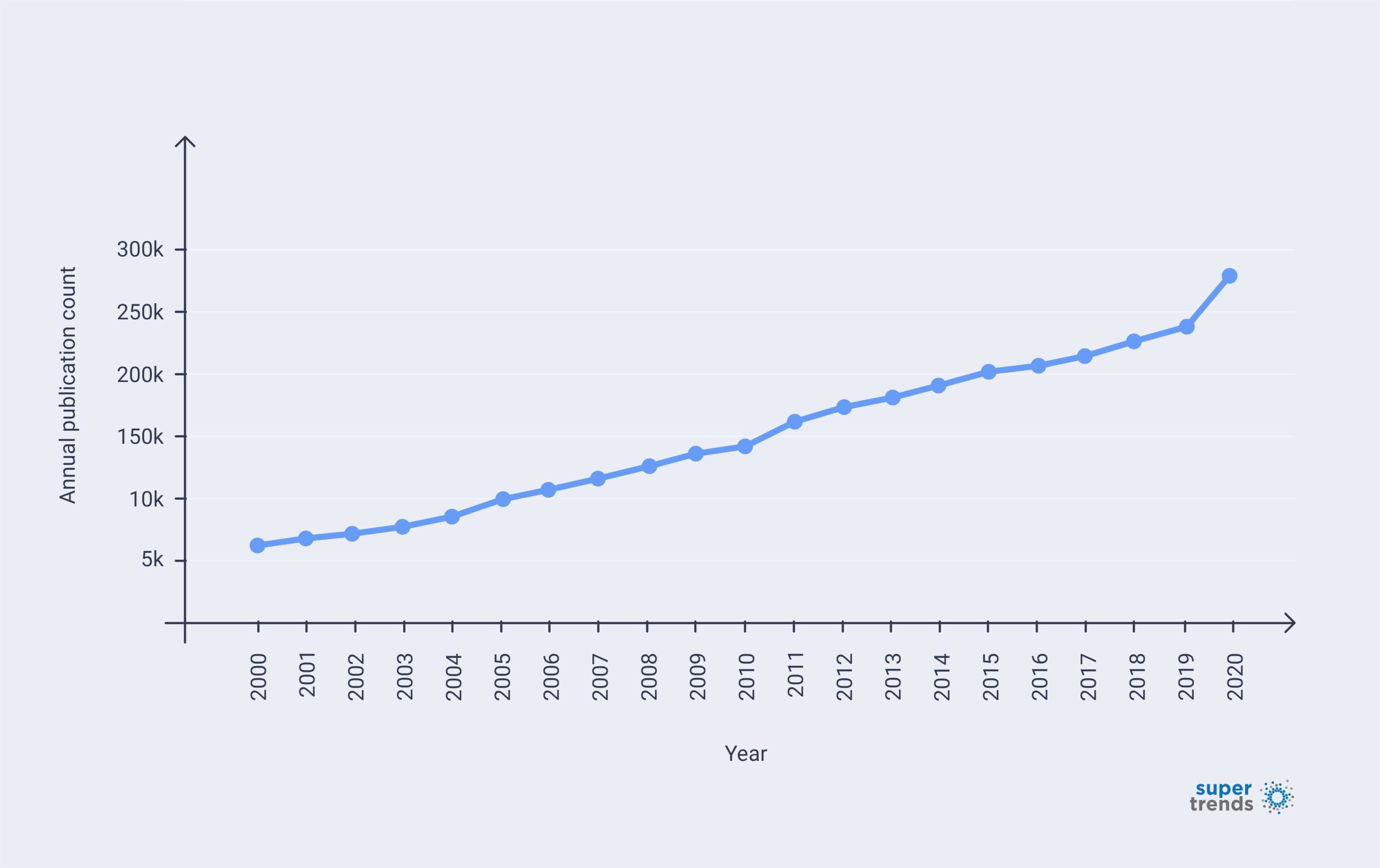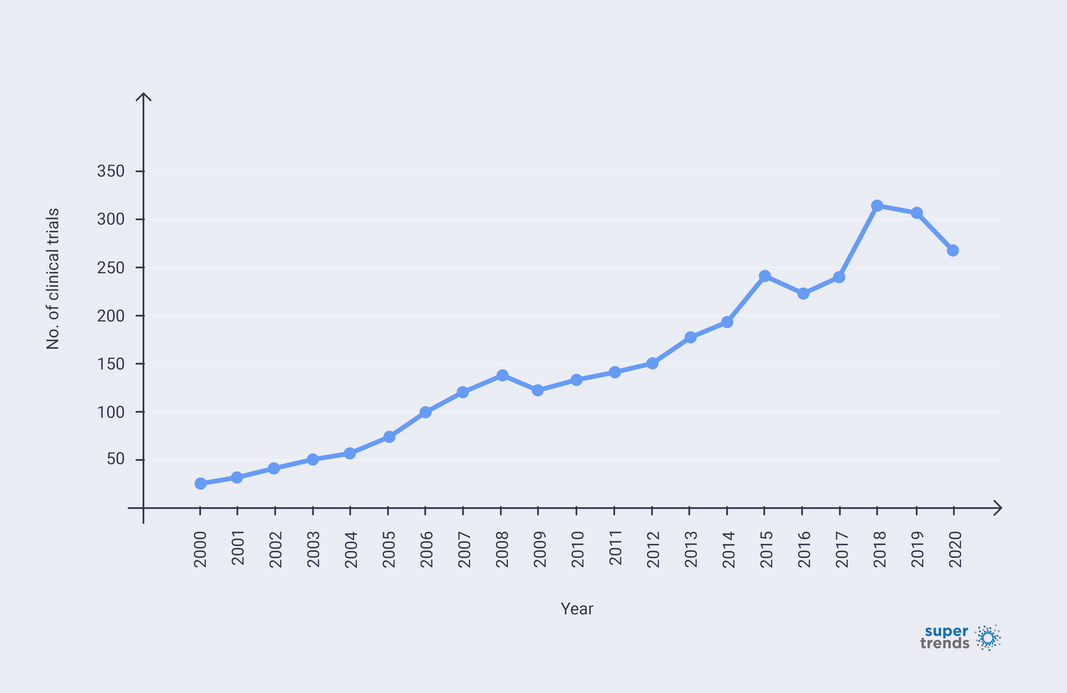Compared to the year 2000, anti-aging technology has seen an increase in both scientific publications and clinical trials in 2020. These trends reflect increased interest from both the academic field and the healthcare industry. In the following, we will discuss the transition from research to application.
Increase in scientific publications
A search of the PubMed database revealed a steady increase in research activity on the topic of aging and age-related conditions. The number of articles published in 2020 was approximately three times higher than in 2000. An acceleration was observed after 2019, and it will be interesting to see whether it continues. (The keywords used in this search “aging” OR “ageing” OR “longevity” OR “age” OR “senescen” OR “life-span”)

Increase in clinical trials
The increasing number of clinical trials targeting aging and age-related conditions is another indicator of increased research interest and activities in this field. It took eight years for the number of clinical trials to increase from over 100 to reach over 200, but only three more years before they reached over 300. (The keywords used in this search were “aging” OR “longevity” OR “age-related” OR “life-span”)

The increase in research activities reflects an increased interest in anti-aging interventions from both the academic field and the healthcare industry. However, this does not mean that new therapeutics will flood the market anytime soon. It takes 17 years on average to translate research into clinical practice, and 12 years to advance from clinical trial to market-ready products.2,3 We may, however, see the gaps between research and practical application closing due to the application of AI, machine learning, and other new tools in biology and medicine. The COVID-19 vaccine, which was developed in less than a year, is a good example of how today’s technology can speed up the development of new therapeutics.
References
2. Morris, Z.S., Wooding S., and Grant J. The answer is 17 years, what is the question: Understanding time lags in translational research. Journal of the Royal Society of Medicine. 2011. 104(12):510-520. doi:10.1258/jrsm.2011.110180
3. Freedman, D.H. 2019.Hunting for new drugs with AI. Nature. 576, S49-S53, December 18, 2019. https://www.nature.com/articles/d41586-019-03846-0